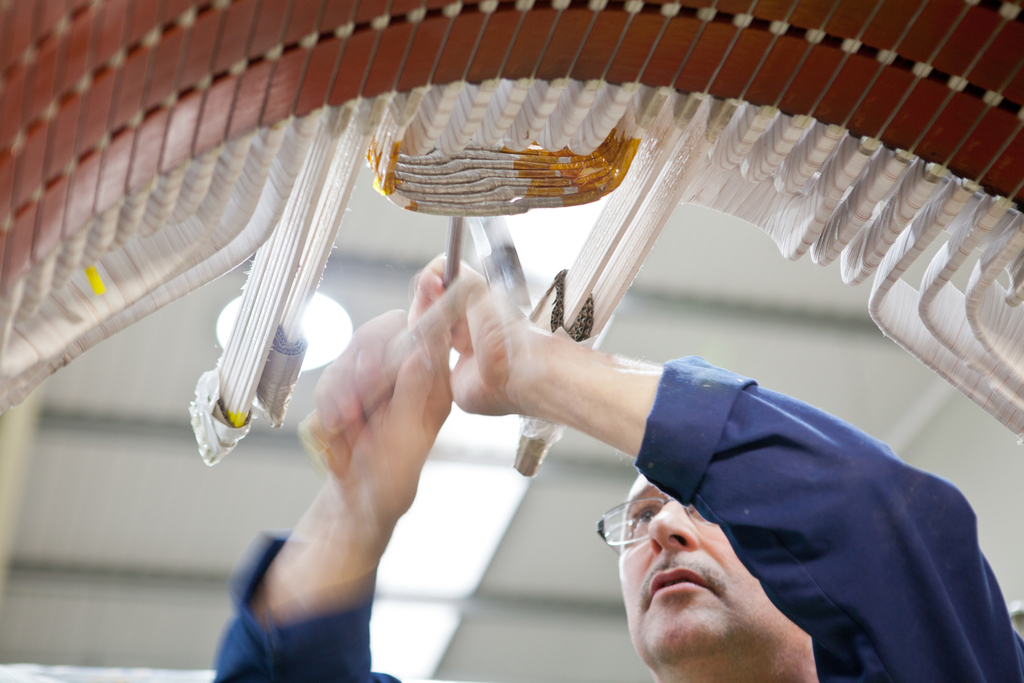

|
Edward Lowton
Editor |


|
| Home> | Plant, Process & Control | >Motors and drives | >Rewind or replace an electric motor? Efficiency considerations |
| Home> | Energy Management | >Motors and drives | >Rewind or replace an electric motor? Efficiency considerations |
Rewind or replace an electric motor? Efficiency considerations
22 March 2018
Despite our best efforts to prevent it, electric motors can fall victim to motor failure. When it does strike, it can be difficult to know just what to do. As business downtime and losses mount, it’s very easy to make a panicked decision over whether to rewind and repair or replace your motor. Houghton International comments

A conundrum is created: Do owners undertake an electric motor rewind https://www.houghton-international.com/services/in-house-services/ac-dc-motor-generator-rewinds-repairs/ or should they invest in a new high-efficiency motor? The promise of higher efficiency levels of new motors is tempting, but costs are high. While motor rewinds are more affordable, could they lead to potential inefficiencies?
But how true is the belief that motor rewinds will cause inefficiencies? It seems to have stemmed from a limited number of studies around smaller motors. It is claimed that carrying out a rewind can drop efficiency by between 1% and 5% each time it is rewound. Considering the associated expense and sheer volume of energy these motors use, this is naturally concerning. However, more recent research has countered these findings.
EASA and AEMT conducted a study in partnership with Nottingham University. It involved 22 new motors from 50 to 300hp. Overall, the results found that when electric motors were rewound using good practice, there was no significant change in the efficiency of the motors. However, in some instances, efficiency actually increased.
Rewind, repair, replace?
These findings could lead to you thinking twice before investing in an expensive electric motor. Of course, in cases of catastrophic failure, this may be your only option. However, it’s important to fully evaluate your options to make sure you make the right choice in terms of operation, cost and efficiency. This can be done by considering some of the key aspects.
Suitability for purpose
As your operational needs change, your electric motor may no longer be suitable. Review the scale of the damage alongside the requirements for the motor’s processes and duty cycles. If the motor is no longer suitable or too damaged, your option is to replace the motor.
Stator core and rotor condition
Next, check the condition of the motor’s stator core and rotor. If significant damage is present, it may be more beneficial to purchase a new motor, as depending on the extent of the damage, repairs can be costly.
Fully consider all options before you decide to buy. For example, if the lead times for the motor you need are long, you may to decide to repair rather than replace to minimise downtime.
Damage to other mechanical parts
Motor failure could lead to damage to the shaft, frame, bearing housing and other mechanical parts. Examine the extent of the damage; you may be able to replace the affected parts at a lower cost than replacing the entire motor.
EPAct or Nema Premium
If you have been considering upgrading to a more efficient model, motor failure could be the excuse you need. If you are considering making the investment, make sure you fully understand the return you’ll receive from doing so. Consider the energy savings you’ll make alongside the expected life of the motor and its hours of operation. Always consider your overall budget too, to make sure the replacement aligns with your current financial position.
If you’re happy with your motor and the efficiency it delivers, you don’t need to worry about a dramatic drop in efficiency following a repair by a qualified service centre.
Make the right choice when deciding whether to repair, rewind and replace your electric motor by thoroughly considering your operational needs, budget and timescale.


















